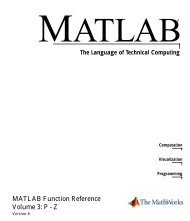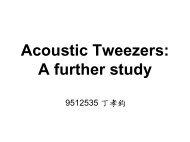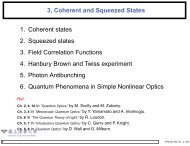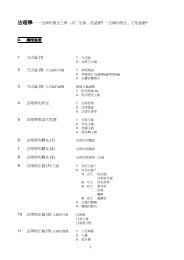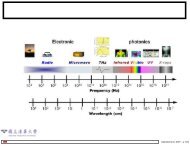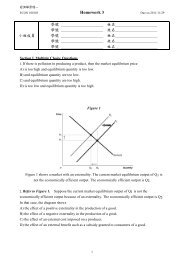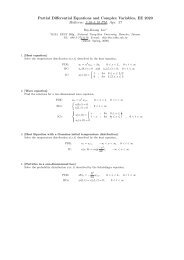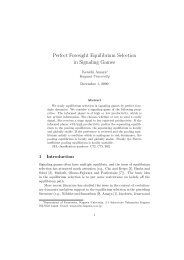Acceleration, Shock and Vibration Sensors
Acceleration, Shock and Vibration Sensors
Acceleration, Shock and Vibration Sensors
Create successful ePaper yourself
Turn your PDF publications into a flip-book with our unique Google optimized e-Paper software.
<strong>Acceleration</strong>, <strong>Shock</strong> <strong>and</strong> <strong>Vibration</strong> <strong>Sensors</strong><br />
Flexural Mode<br />
Flexural mode designs utilize beam-shaped sensing crystals, which are supported to<br />
create strain on the crystal when accelerated. The crystal may be bonded to a carrier<br />
beam that increases the amount of strain when accelerated. The flexural mode enables<br />
low profile, lightweight designs to<br />
Piezoelectric Element<br />
be manufactured at an economical<br />
price. Insensitivity to transverse<br />
Seismic Mass<br />
motion is an inherent feature of<br />
this design. Generally, flexural<br />
beam designs are well suited for<br />
low frequency, low gravitational<br />
Accelerometer Base<br />
(g) acceleration applications such<br />
as those that may be encountered<br />
during structural testing.<br />
Figure 5.2.7: Flexural mode accelerometer.<br />
Compression Mode<br />
Compression mode accelerometers are simple structures which provide high rigidity.<br />
They represent the traditional or historical accelerometer design.<br />
Upright compression designs s<strong>and</strong>wich the piezoelectric crystal between a seismic<br />
mass <strong>and</strong> rigid mounting base. A pre-load stud or screw secures the sensing element<br />
to the mounting base. When the sensor is accelerated, the seismic mass increases or<br />
decreases the amount of compression force acting upon the crystal, <strong>and</strong> a proportional<br />
electrical output results. The larger the seismic mass, the greater the stress <strong>and</strong>, hence,<br />
the greater the output.<br />
This design is generally very rugged <strong>and</strong> can withst<strong>and</strong> high-g shock levels. However,<br />
due to the intimate contact of the sensing crystals with the external mounting<br />
base, upright compression designs tend to be more sensitive to base bending (strain).<br />
Additionally, expansion <strong>and</strong> con-<br />
traction of the internal parts act<br />
along the sensitive axis making the<br />
accelerometer more susceptible<br />
to thermal transient effects. These<br />
effects can contribute to erroneous<br />
output signals when used on thin<br />
sheet-metal structures or at low<br />
frequencies in thermally unstable<br />
environments, such as outdoors or<br />
near fans <strong>and</strong> blowers.<br />
Seismic<br />
Mass<br />
Electrode<br />
Figure 5.2.8: Compression mode accelerometer.<br />
143<br />
Pre-load<br />
Stud<br />
Piezoelectric<br />
Crystal<br />
Built-in Electronics<br />
Signal (+)<br />
Ground (–)




